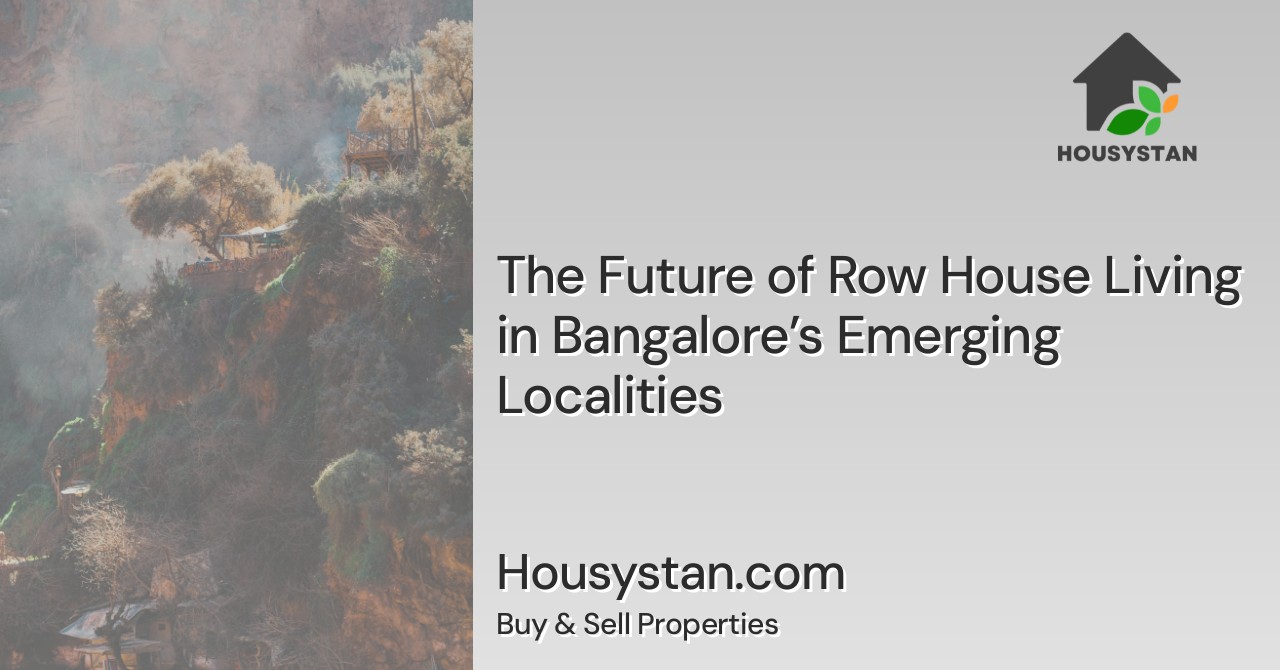The Future of Row House Living in Bangalore’s Emerging Localities
Read latest blogs and articles from Housystan

The Information mentioned here was last updated on:
21/12/2025The future of row house living in Bangalore’s emerging localities is set for remarkable transformation, driven by the city’s rapid urban expansion and evolving residential preferences. As Bangalore continues to attract professionals, entrepreneurs, and families from across India and abroad, the demand for thoughtfully designed living spaces has grown exponentially. Row houses, especially in burgeoning neighborhoods such as Whitefield, Sarjapur Road, Hennur, Yelahanka, and Electronic City, are becoming a preferred choice for those seeking privacy, security, and a strong sense of community, all within a modern, urban environment.
Unlike traditional apartment complexes, row houses offer residents the luxury of independent living with exclusive amenities such as private gardens, dedicated parking, and multi-level layouts. These features cater to the aspirations of homebuyers who desire both spaciousness and connectivity. New developments in Bangalore’s prime growth corridors are integrating eco-friendly elements, smart home technology, and sustainable building materials, aligning with the city’s commitment to green living. Proximity to IT hubs, renowned educational institutions, healthcare facilities, and vibrant retail centers further enhances the appeal of row house communities in these neighborhoods.
Emerging localities in Bangalore are witnessing infrastructural upgrades, including improved roads, metro connectivity, and enhanced public services. This urban progress is making row house investments increasingly lucrative, with significant potential for property appreciation. Real estate developers, recognizing the shifting trends, are introducing innovative designs that blend contemporary architecture with local culture, ensuring that each row house development stands out within the city’s dynamic landscape.
- Verified Tenants/Buyers
- Unlimited Property Listing
- Zero subscription/charges fee
For homebuyers and investors, choosing a row house in Bangalore’s up-and-coming areas means embracing a lifestyle marked by tranquility, exclusivity, and accessibility. Whether you are looking for a serene family environment, a secure gated community, or a property with future growth potential, the new wave of row house living in Bangalore delivers on all fronts. As the city continues to grow and diversify, these residences are poised to redefine modern living, making them an attractive option for those seeking the perfect balance between urban convenience and residential comfort in India’s Silicon Valley.